How to build a simple DIY Waterfall Writing Desk with free plans and YouTube video tutorial. This is a simple writing desk that can be built with a few tools and the cost of lumber is under $100.
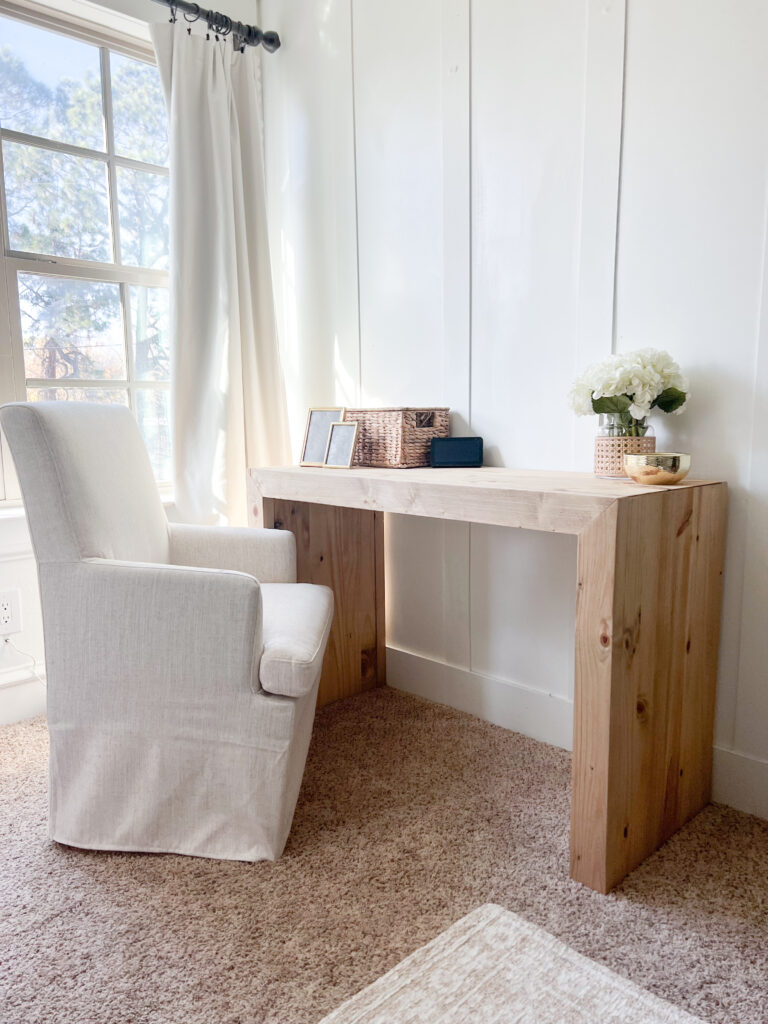
My oldest daughter is in college and spends lots of time on her laptop. She asked, well begged me to build her a small desk for her room where she could sit and do her work. She sent me ideas for her desk design and we came up with this together. I love how it turned out! It is a great desk for a small space, and would also make a perfect console table for a small entry or space. You can get the free desk plans with dimensions, instructions and cut list at the bottom of this post.
Table of Contents
DIY Writing Desk How-To Video
Tools
This desk uses a few different tools. This is a great beginner woodworking project.
- drill
- Kreg Jig
- Miter saw
- Table saw
- Brad nailer
- sander
Kreg Jig
One question we get asked consistently is… “What is a Kreg Jig?” A Kreg Jig is a pocket hole jig that helps create pocket-holes allowing you to build with super strong joints. It makes joining two boards faster and gives you stronger and cleaner joints than countersinking a wood screw. We discovered them shortly after we starting building furniture and it was a HUGE game changer for our furniture building! We were so impressed with how user-friendly they are and the strong joints it gave our builds! For this desk, I used my Kreg Jig 720 PRO and I LOVE IT! You guys will love it too… definitely worth the upgrade for those of you that already own a different model. You can see it HERE on Amazon! You can also check out our video on how to use it HERE!
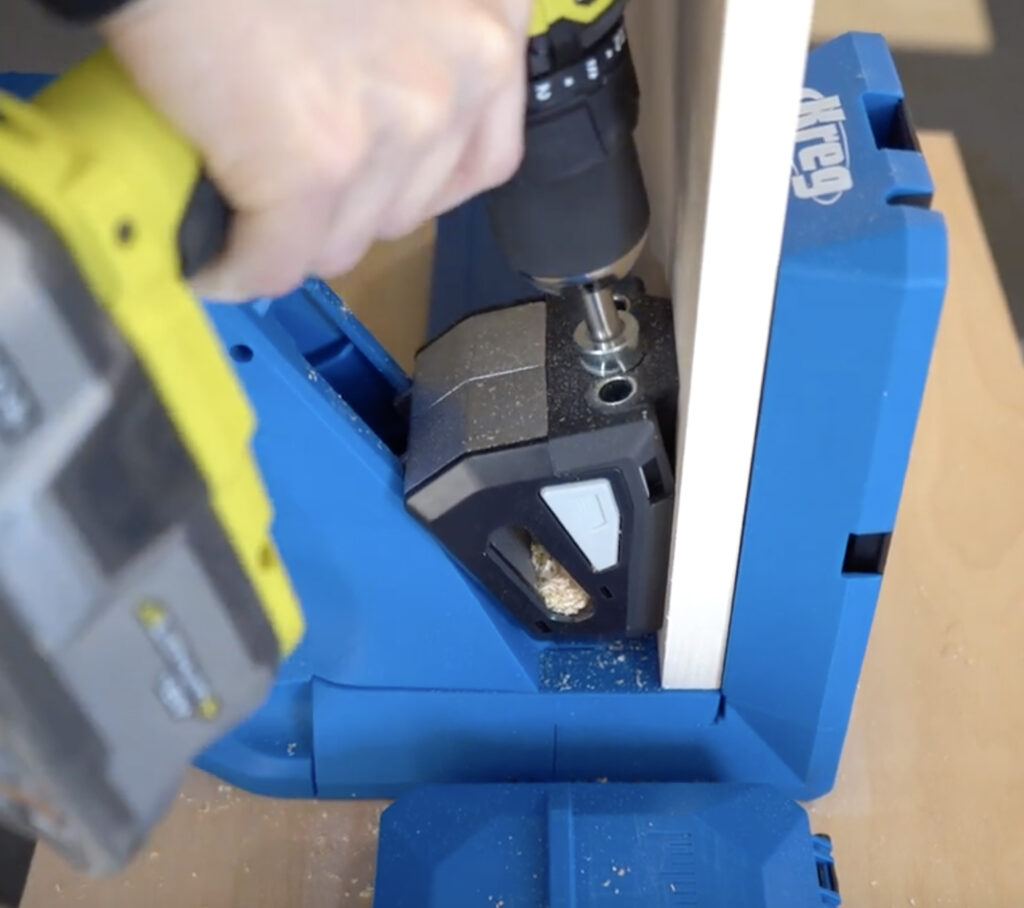
Lumber for the Desk
The frames of this desk are made with 2×4 framing lumber that we ripped down to 3″ wide each. The top, sides and inside of the desk are created with laminated pine project panels. These pine boards are typically found on the same aisle as dimensional lumber and are often placed with other table tops and wrapped in plastic. I typically purchase mine from Lowe’s. You can see them HERE. They come in a variety of sizes which is great so you don’t have too much scrap. We also love the way they stain. I kept the width of my panels the same (16″) but you can adjust to fit your space by ripping them down with a table saw or circular saw. I made my cross cuts using my miter saw.
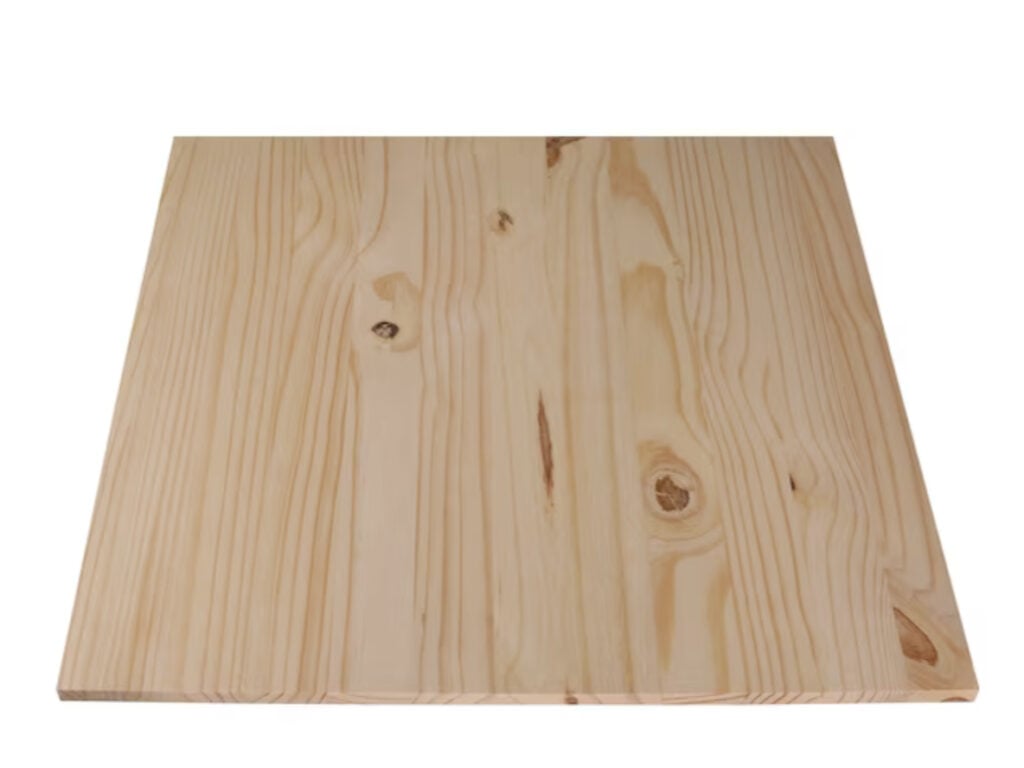
Step 1
The first step is prepping your wood and making your cuts. As I mentioned, the 2×4 boards are ripped to 3″ wide each. This gives them a very polished and professional looking appearance vs. using the rounded edge. We use our table saw to rip the 2x boards down on this part. You can see the video of how we do this HERE.
After ripping the 2×4 boards to 3” wide each, make cut the boards at a 45º angles to create the desk frame. You will create 2 identical frames. Add 1.5” pocket holes at the edge of the 45º angles on each
side board.
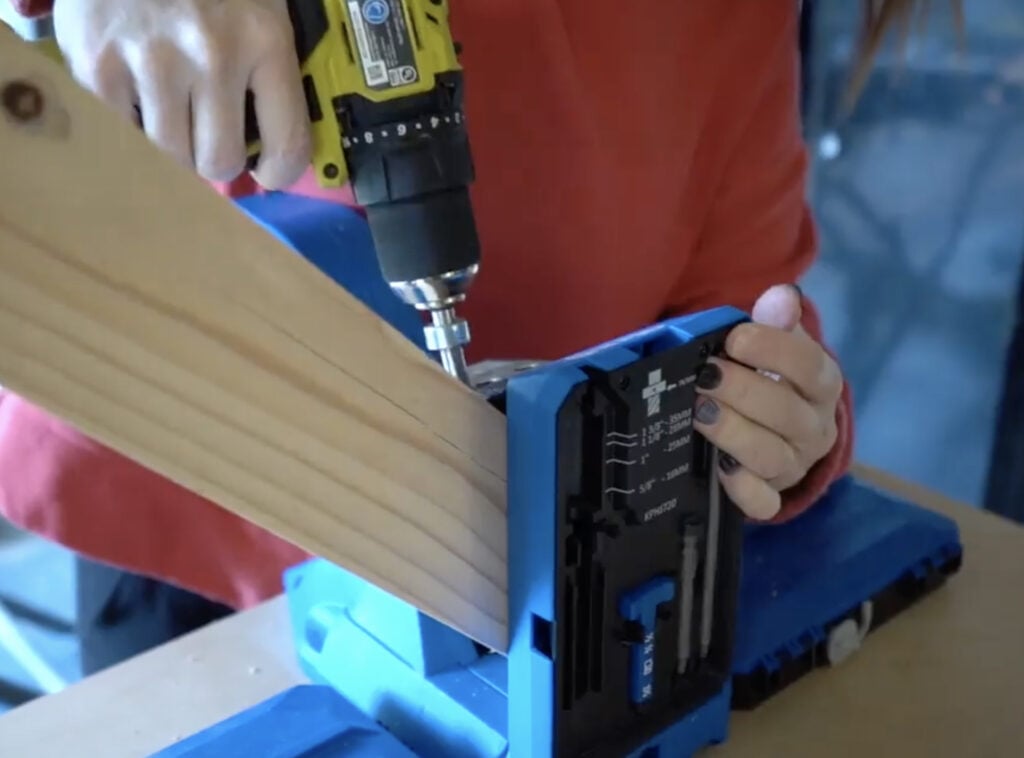
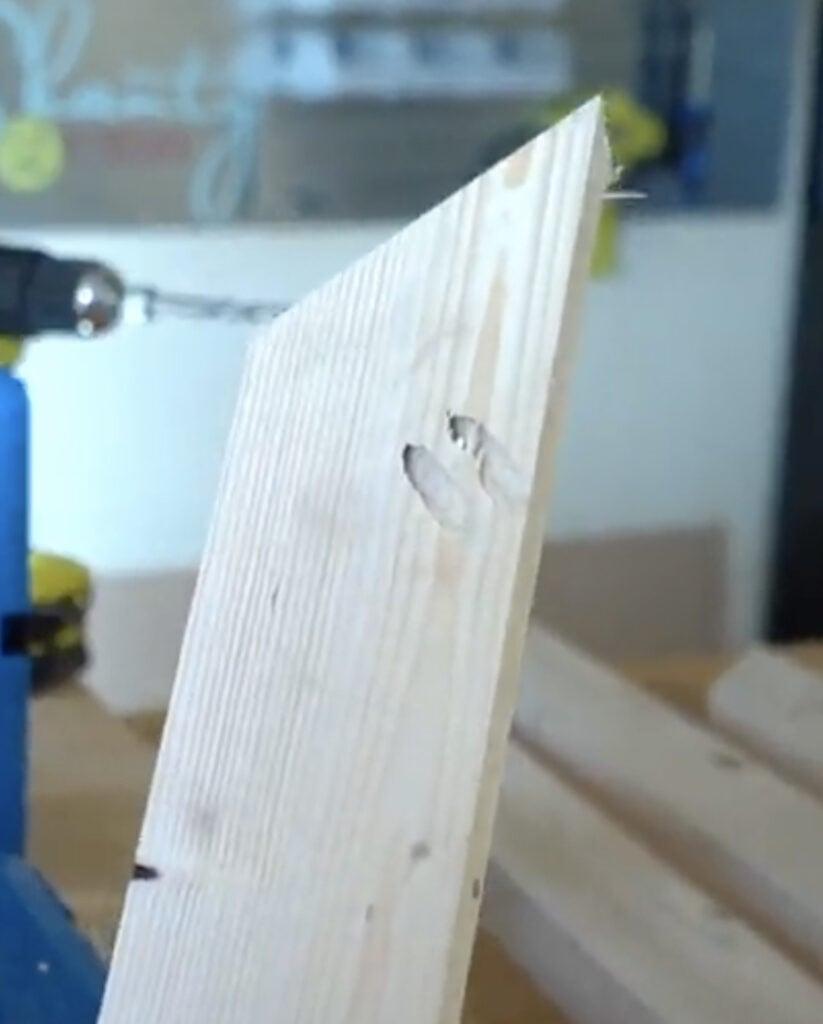
Attach the side boards to the top boards using wood glue and 2.5” pocket hole screws and wood glue to create the frames. Kreg makes amazing Face Clamps that help to clamp and keep your wood flush on this part. You can see them HERE!
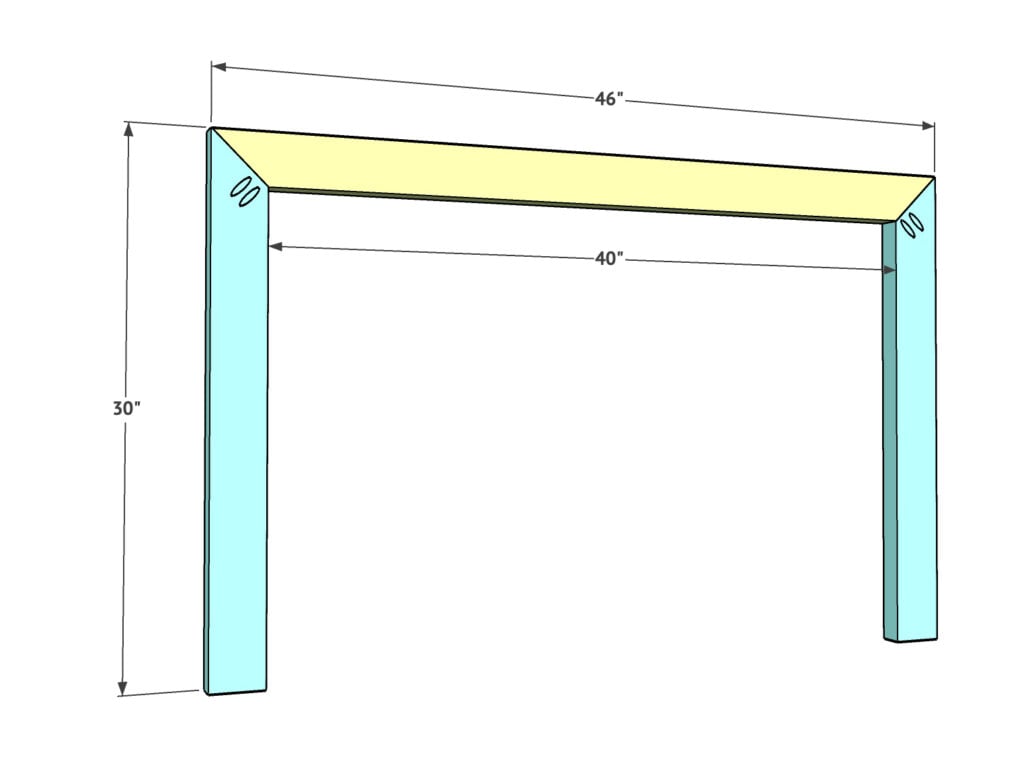
Step 2
Add the top of the desk next. Add 3/4” pocket holes down both long sides of the bottom of the desktop. Add a line of glue to the top edge of one frame and attach the table top flush with top of the
frame using 1.25” pocket hole screws.
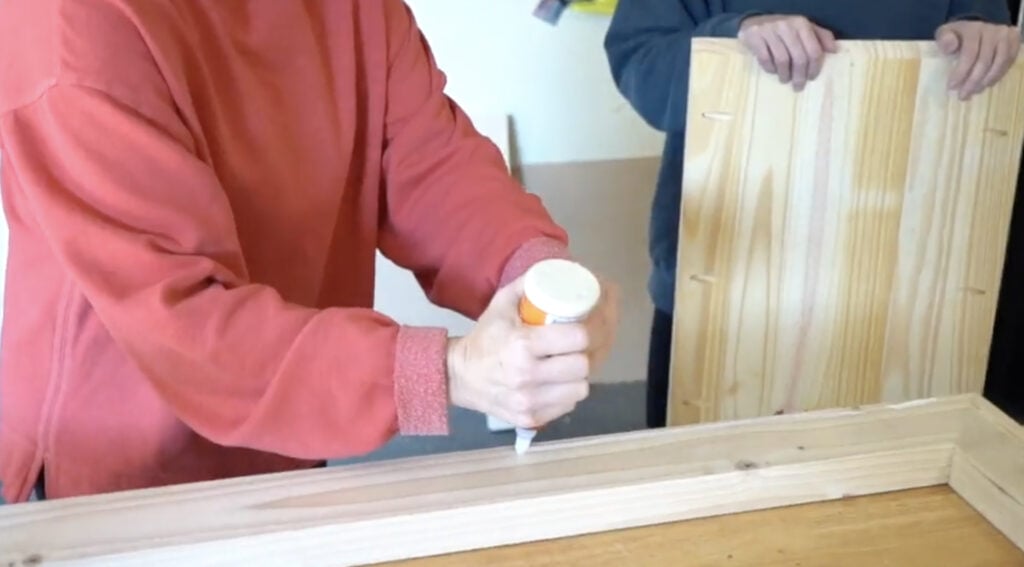
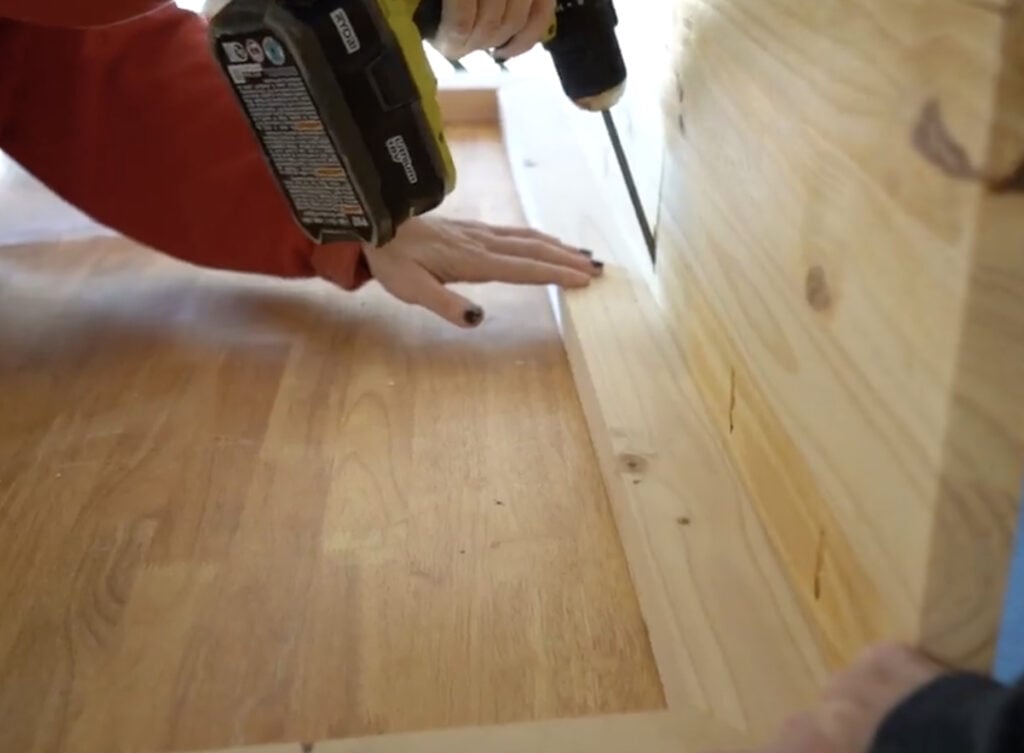
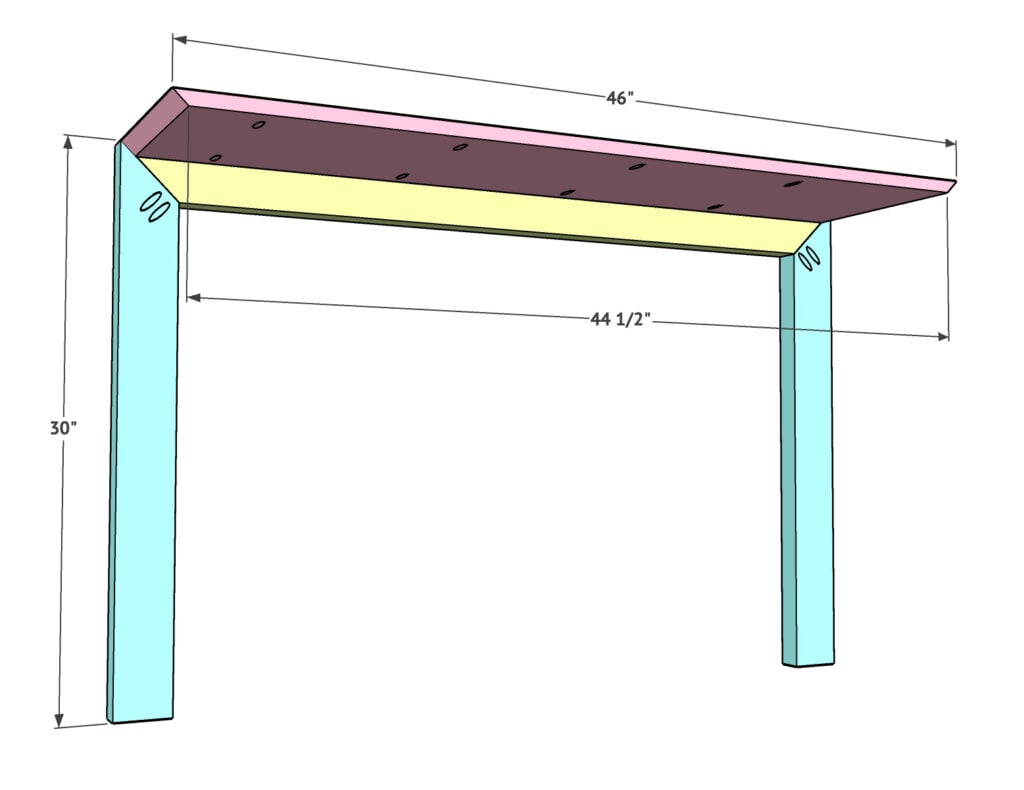
Step 3
Now add the outside side panels of the desk. The top of these are also cut at 45º angles. Add 3/4”
pocket holes down both long sides of the insides of these boards. Add a line of wood
glue to the edge of the side frame pieces and attach the outside boards using 1.25” pocket hole screws. The outside of the desk side piece will be flush with the outside of the frame board.
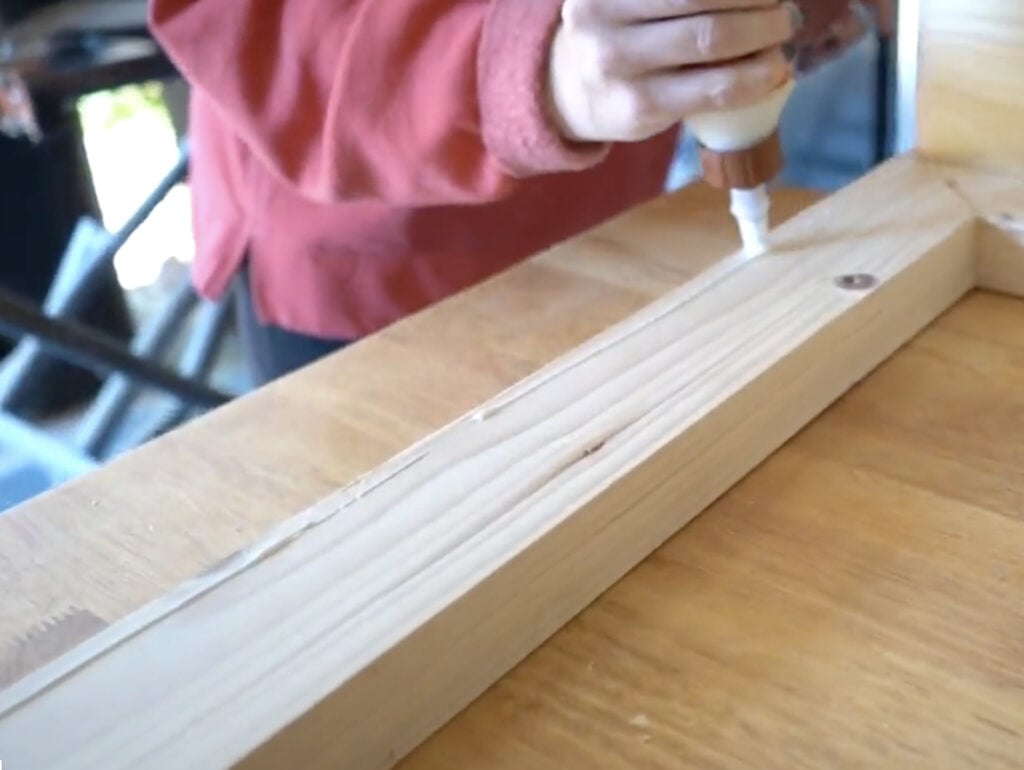
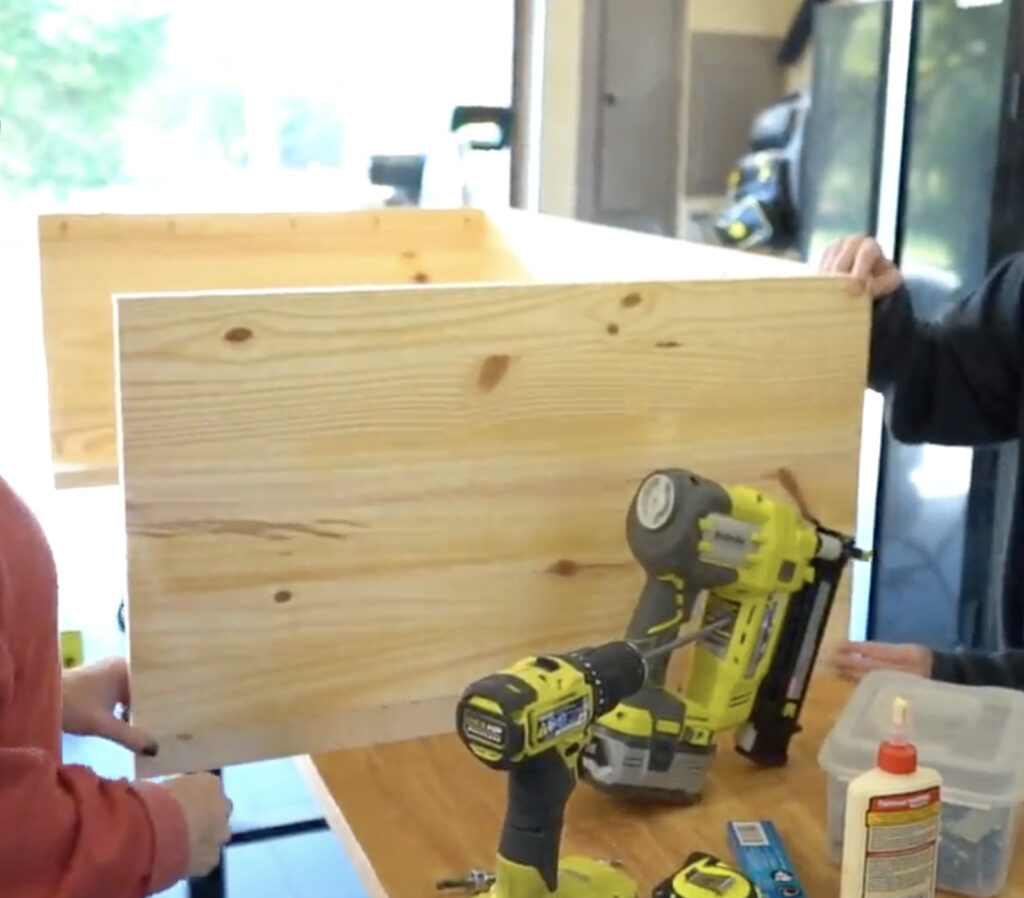
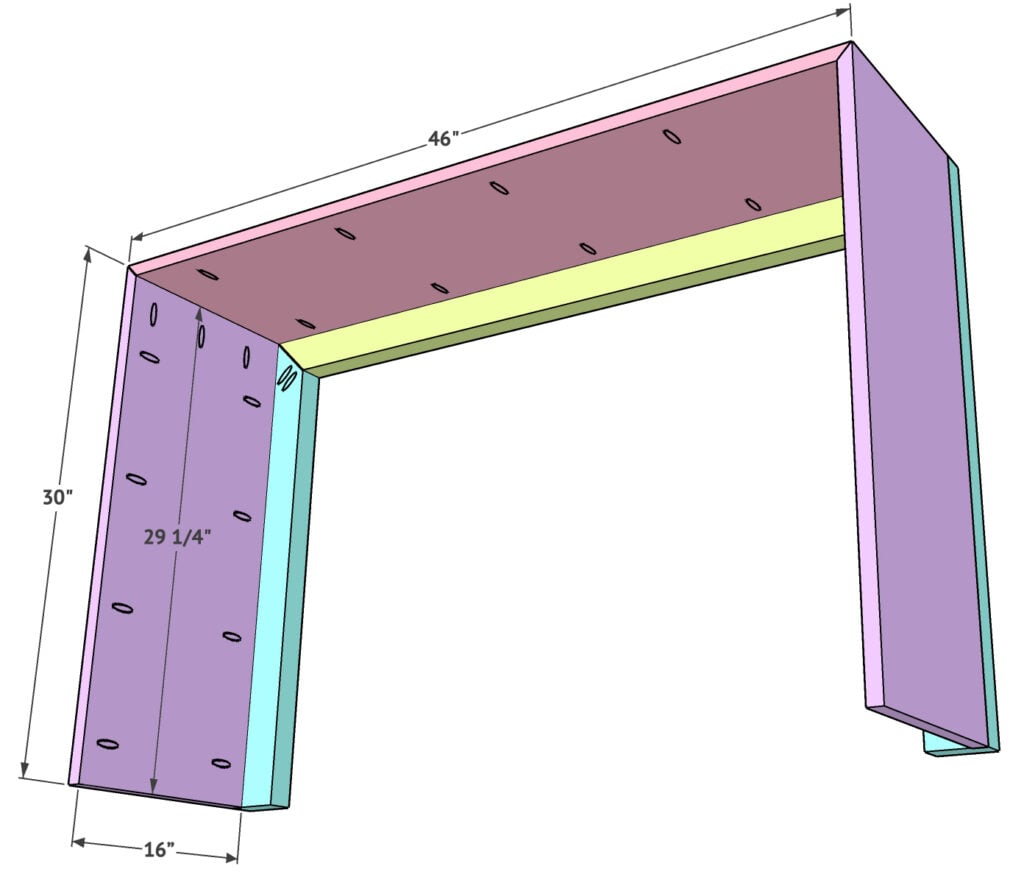
Step 4
Next, add the support boards to the insides of the desk sides. These are scraps cut from your extra panels. I cut 4 pieces each around 3” wide. Line the top supports up at the top of the desk and place the second set closer to the bottom. Attach the first board with wood glue and 1.25” brad nails and then add the second on top of it also attaching with wood glue and brad nails. Repeat this
with the remaining 6 boards. Make a small mark on the edge of the panels on the outside to have a visual of where these boards are when they are covered on the final step.
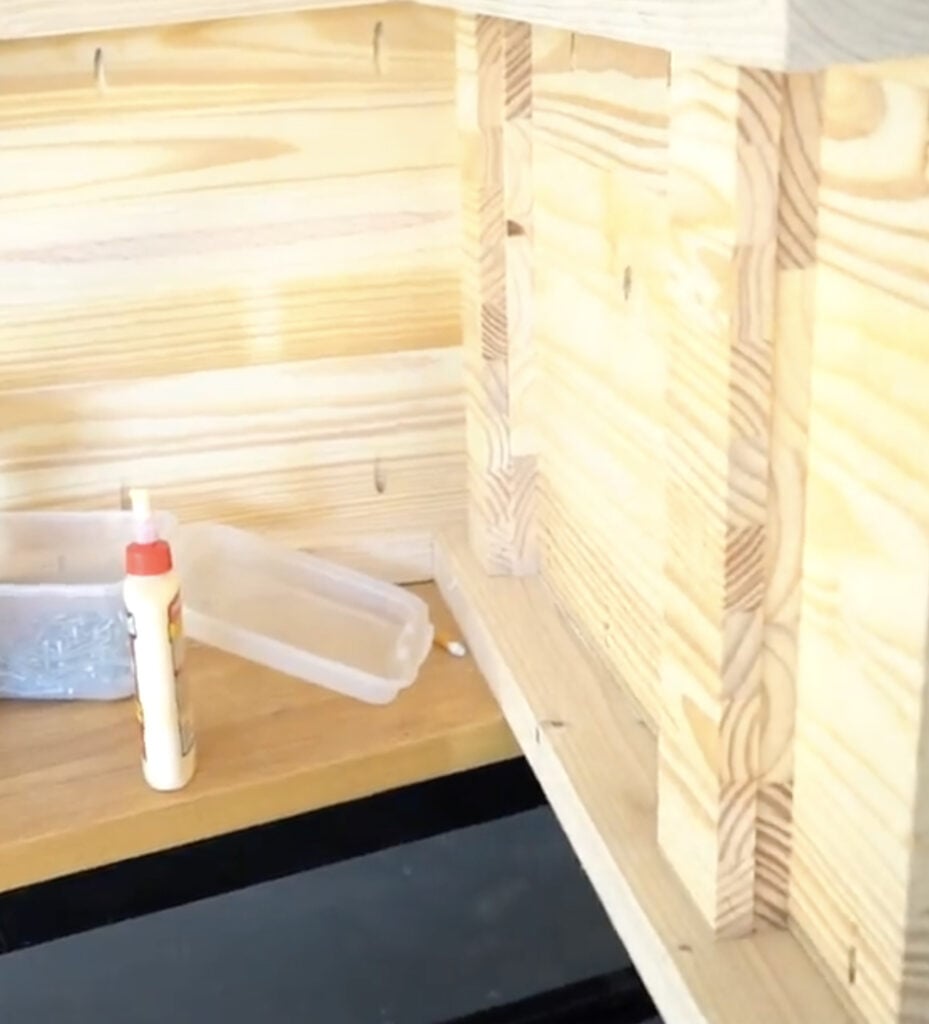
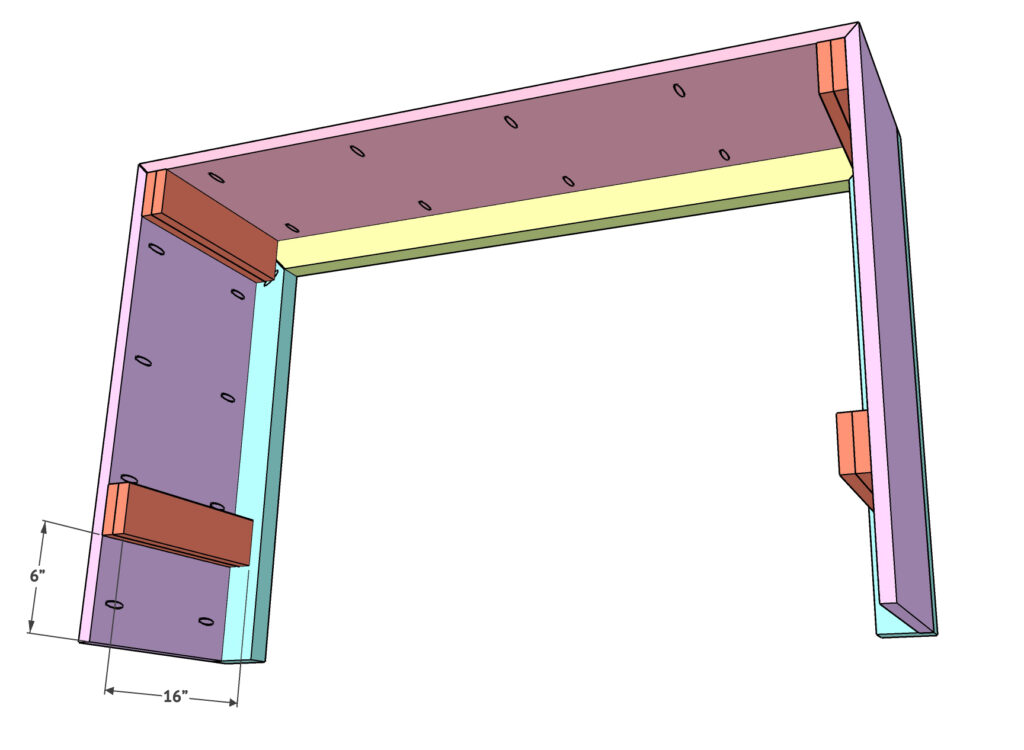
Step 5
Attach the other frame now to the desk body you have built. Add a line of wood glue around all flush outer edges of the back of the frame and attach the desk to it using 1.25” Kreg pocket hole screws. Make sure all outside edges of the frame and desk body are flush at this point.
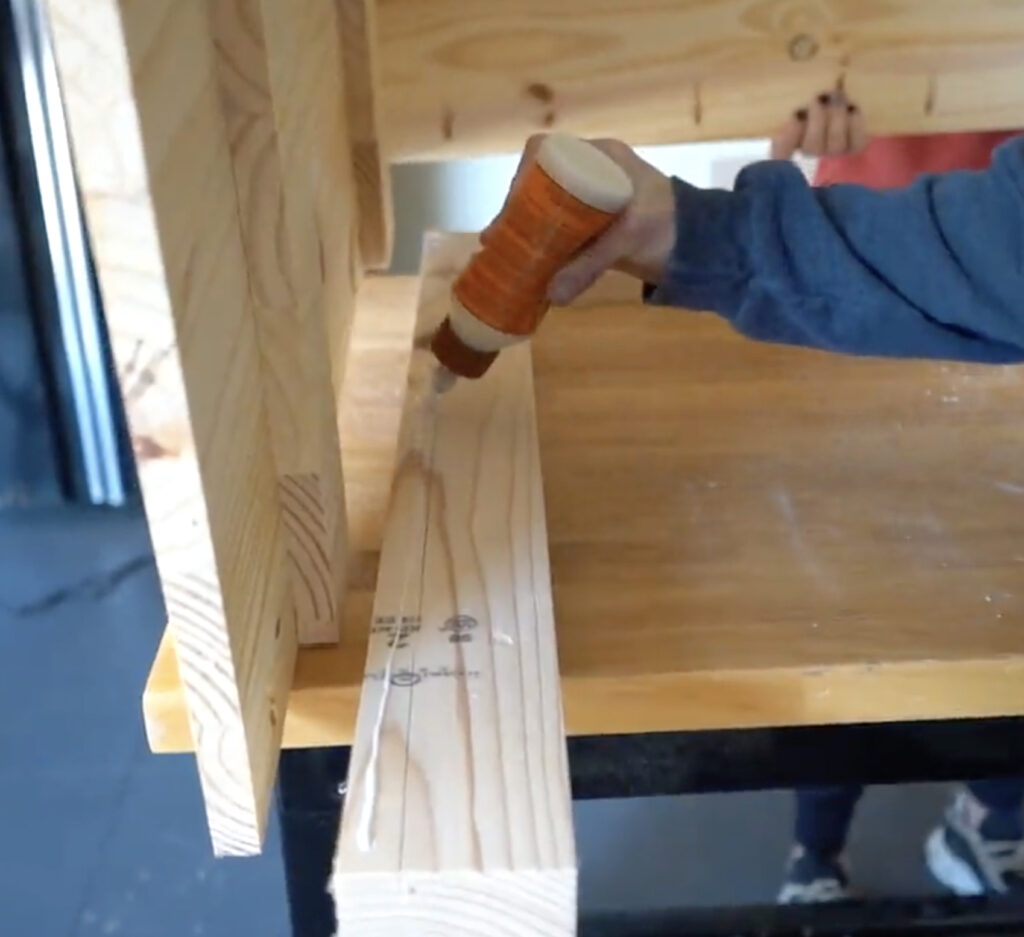
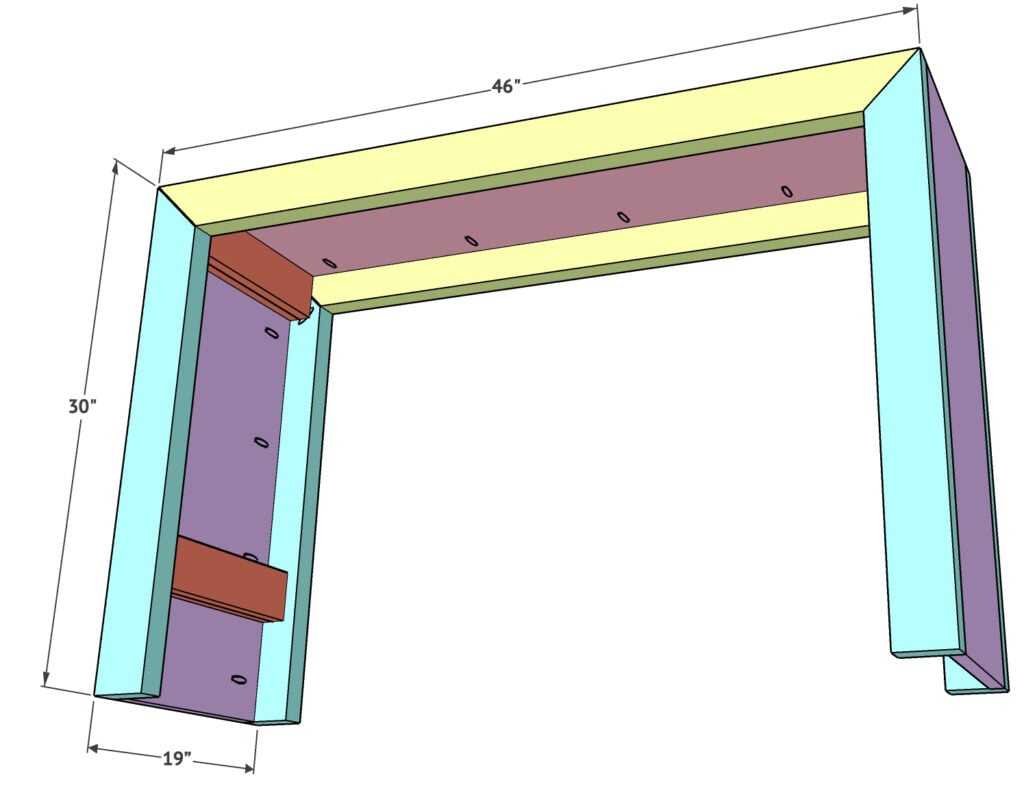
Step 6
The final step is attaching the inside panels to hide all of the pocket holes and support
boards. These boards will give you that waterfall look. They are also edge glued panels cut to size. Add wood glue to the tops of each inside support board and attach the panels using 1.25” brad nails.
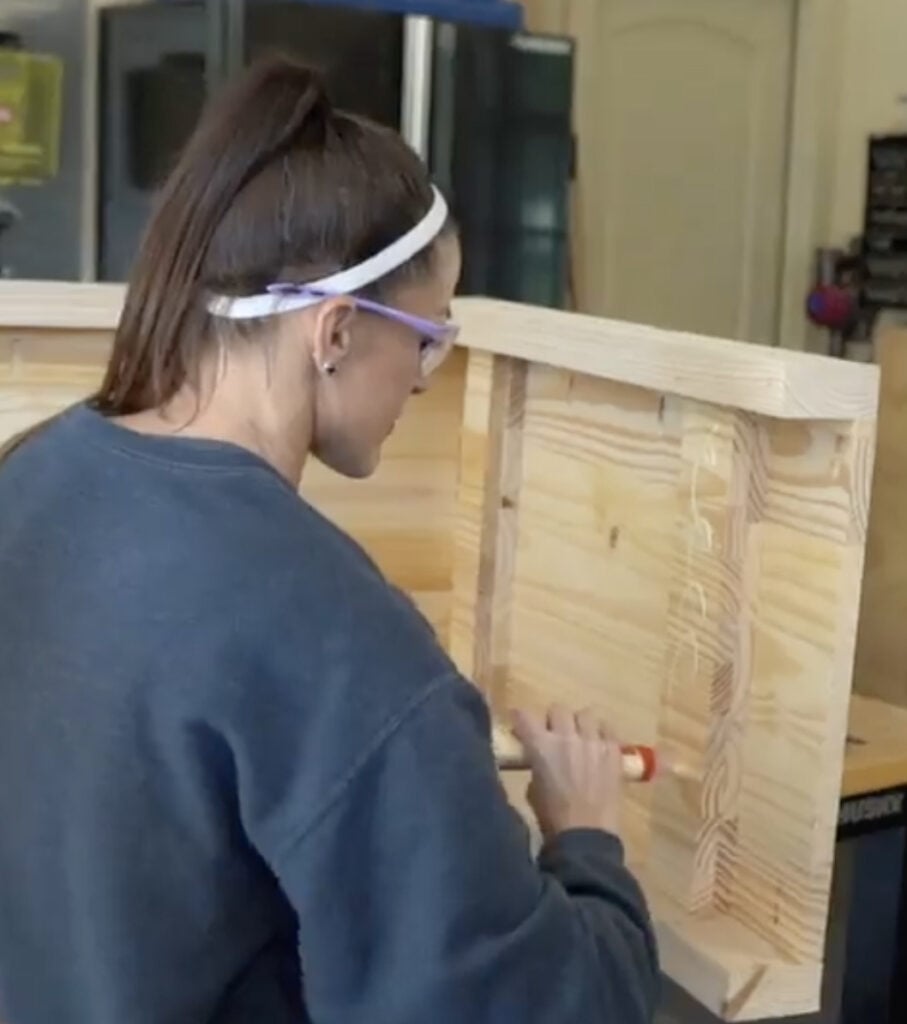
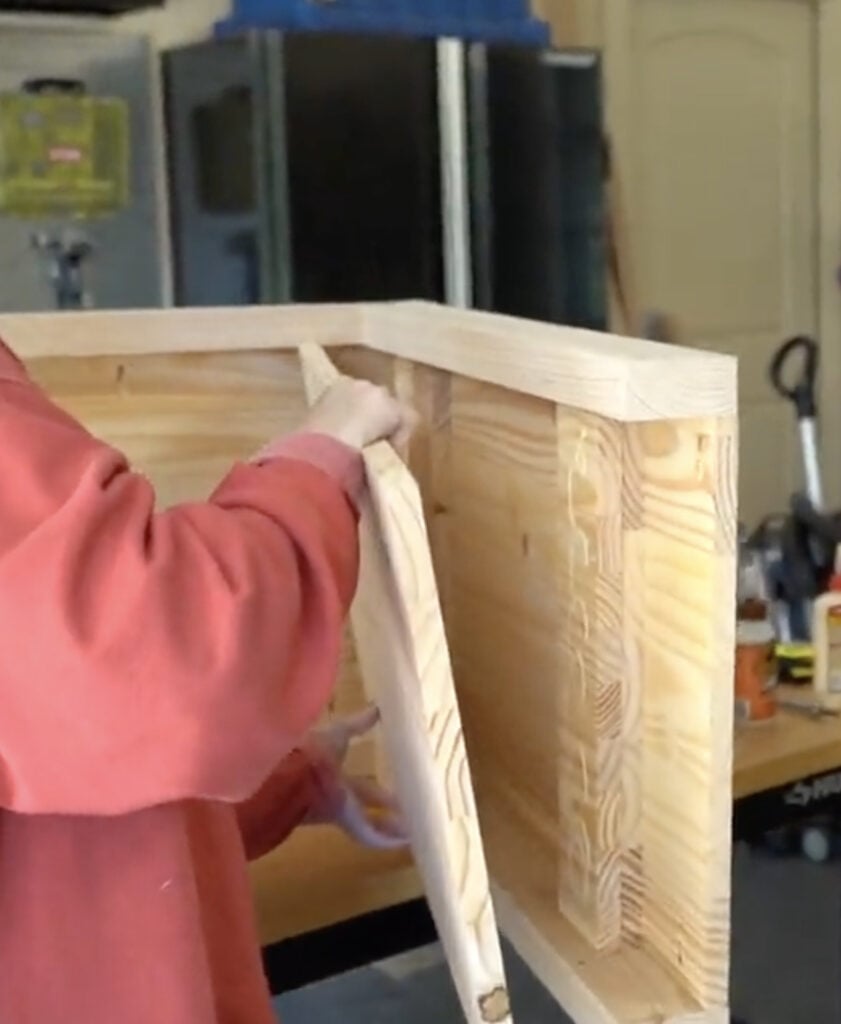
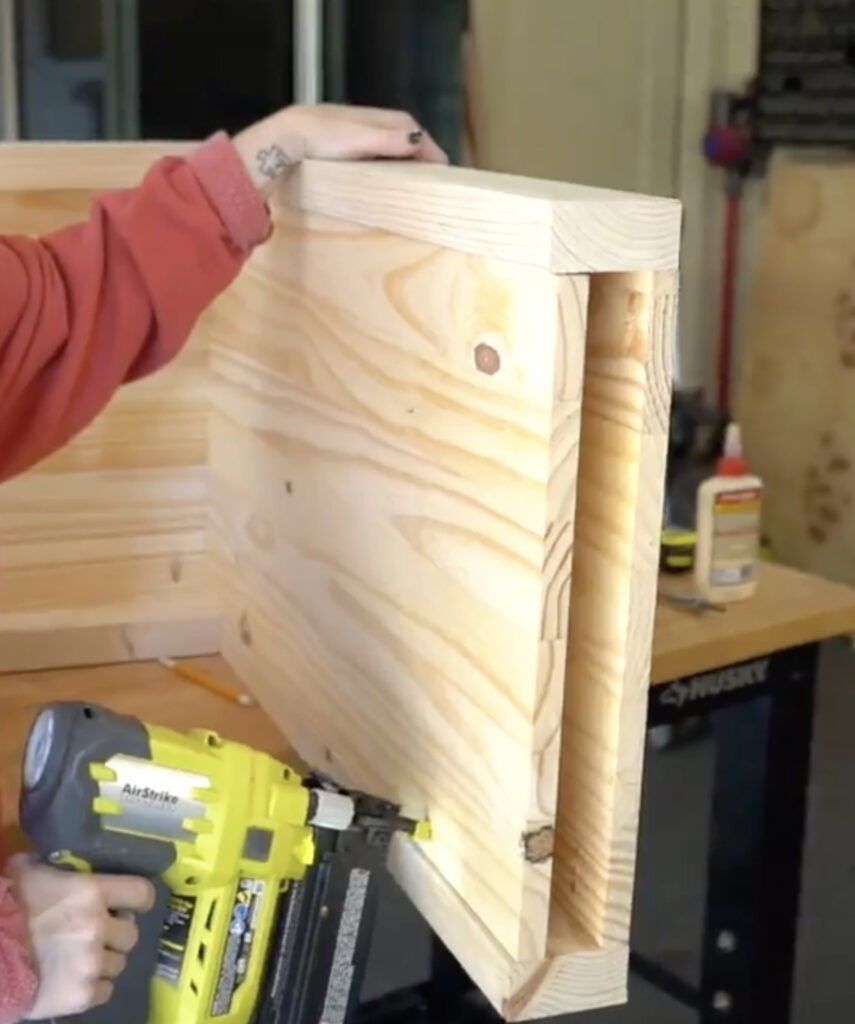
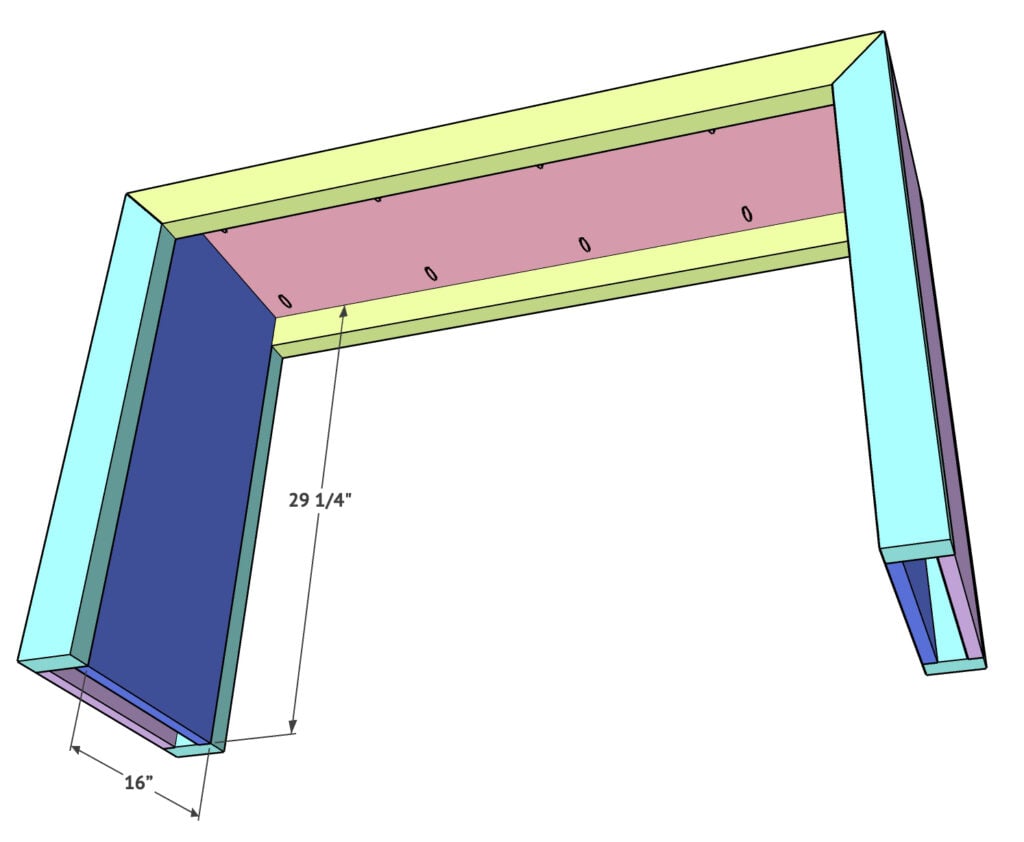
Staining the Table
I decided to create my own stain color by mixing three different stains. This is a really fun way to give you an even more custom look and it’s super simple! You can check out my reel on how I created this color here!
I used three different Varathane stain colors to create this. I started with an empty tub from the hardware store. These are super inexpensive. You can also use any empty container you have at home! I mixed two parts of Natural stain, one part of Golden Oak, and a splash of Weathered Gray. This gave me the perfect finish that I was looking for. You just put all of that into the bucket and stir it up just a bit and you’re ready to go!
Make sure to sand all the surfaces with medium and fine sandpaper to get an even, beautiful finish. I like to use my Ryobi Corner Cat for this! An orbital sander also works great!
I often get asked what protective coat I like to use on top. My favorite polyurethane is THIS ONE!
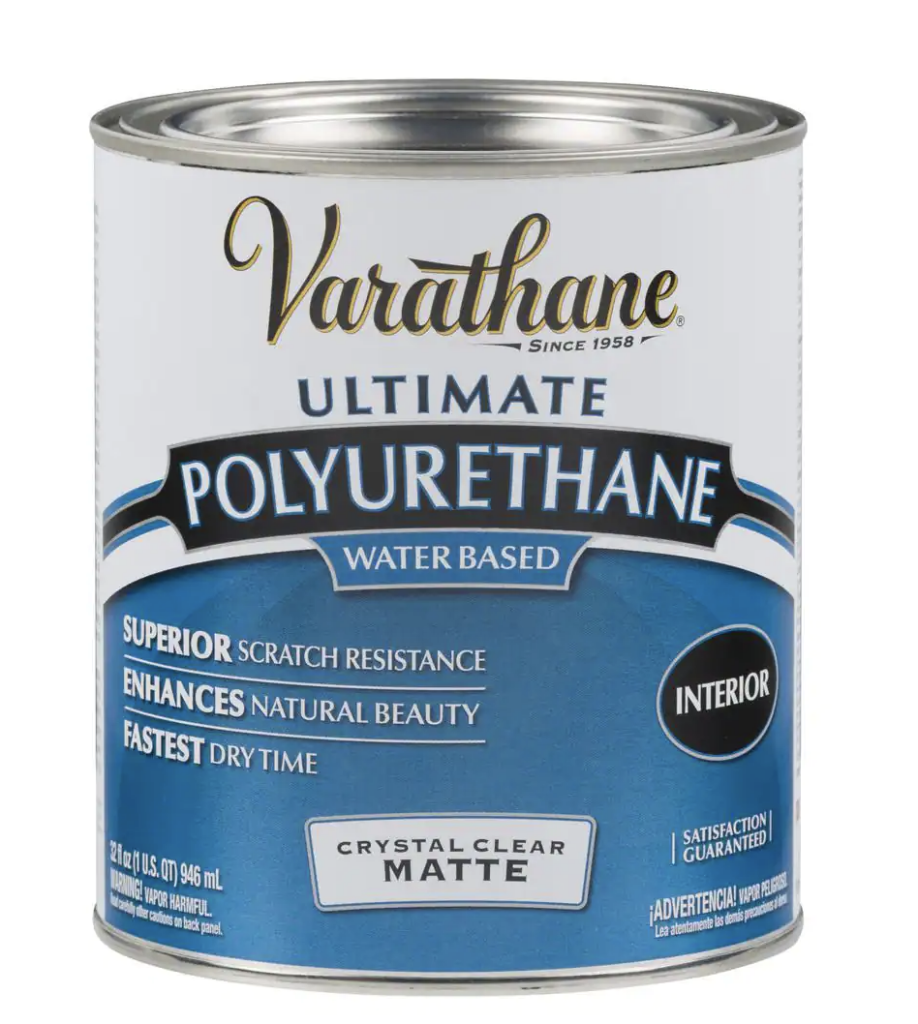

Other Desk Designs
Check out some of our other great desk designs!
Free Printable Plans
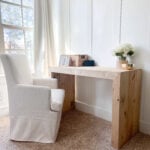
DIY Waterfall Writing Desk
Supply List
- 3 boards 2 x 4 x 8 ripped to 3" wide each
- 5 panels 16" x 48" edge glued pine panels
Instructions
- Cut List
- After ripping the 2×4 boards to 3” wide each, make cut the boards at a 45º angles to create a frame. You will create 2 identical frames. Add 1.5” pocket holes at the edge of the 45º angles on eachside board. Attach the side boards to the top boards using wood glue and 2.5” pocket hole screws and wood glue to create the frames.
- Add the top of the desk next. Add 3/4” pocket holes down both long sides of the bottom of the desk top. Add a line of glue to the top edge of one frame and attach the table top flush with top of the frame using 1.25” pocket hole screws.
- Now add the outside side panels of the desk. The top of these are also cut at 45º angles. Add 3/4”pocket holes down both long sides of the insides of these boards. Add a line of woodglue to the edge of the side frame pieces and attach the outside boards using 1.25” pocket hole screws. The outside of the desk side piece will be flush with the outside of the frame board.
- Next, add the support boards to the insides of the desk sides. These are scraps cut from your extra panels. I cut 4 pieces each around 3” wide. Line the top supports up at the top of the desk and place the second set closer to the bottom. Attach the first board with wood glue and 1.25” brad nails and then add the second on top of it also attaching with wood glue and brad nails. Repeat thiswith the remaining 6 boards. Make a small mark on the edge of the panels on the outside to have a visual of where these boards are when they are covered on the final step.
- Attach the other frame now to the desk body you have built. Add a line of wood glue around all flush outer edges of the back of the frame and attach the desk to it using 1.25” Kreg pocket hole screws. Make sure all outside edges of the frame and desk body are flush at this point.
- The final step is attaching the inside panels to hide all of the pocket holes and supportboards. These boards will give you that waterfall look. They are also edge glued panels cut to size. Add wood glue to the tops of each inside support board and attach the panels using 1.25” brad nails.
Notes



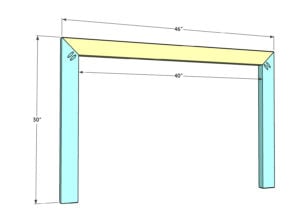
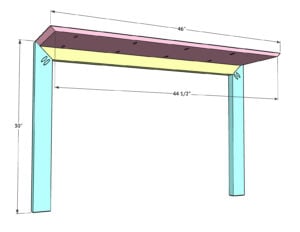
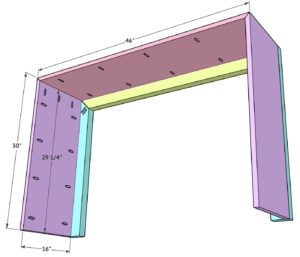
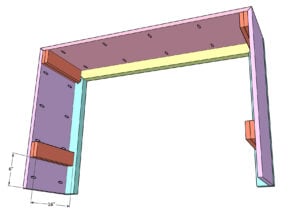
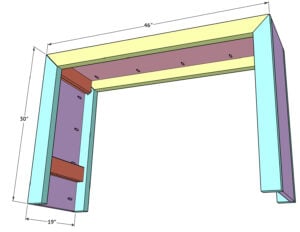
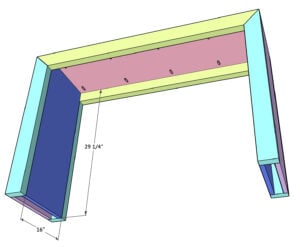
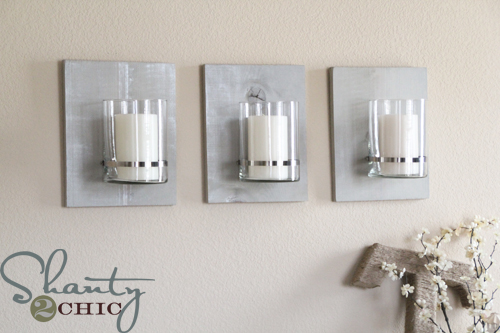



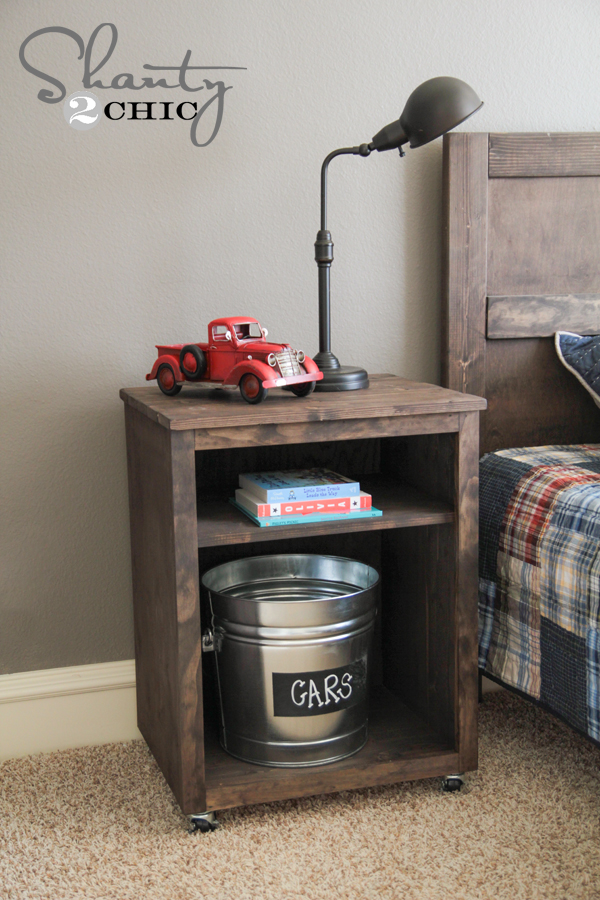
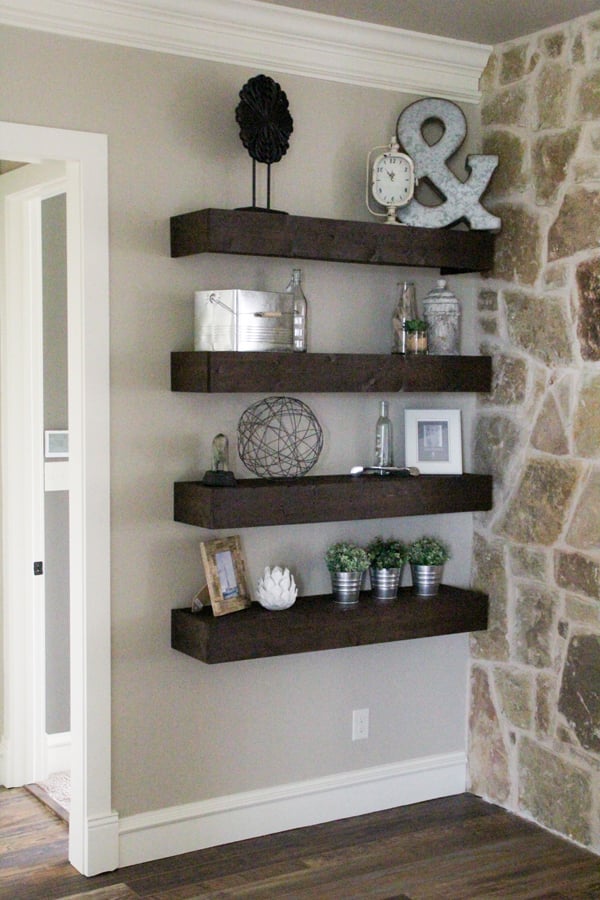
As always, it looks great! How do the 1x pine pieces hold up to the weather?
What color stain is that? Thank you!